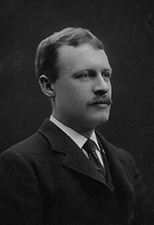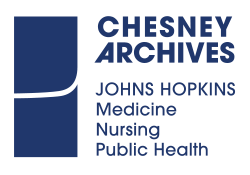Stewart Paton and Paton Family Collections

Stewart Paton
by Ilgenfritz
Collection Overview
Creator: Paton, Stewart (1865-1942)
Collection Date: 1842-2011
Extent: 9.5 cubic feet (25 boxes)
Biography
Stewart Paton was born in Warwick, New York on April 12, 1865. After graduating from Princeton University in 1886, Stewart Paton enrolled in the College of Physicians and Surgeons at Columbia University and received his Medical Degree in 1889. Postgraduate studies in neuropsychiatry and biology took him to Europe, where he spent several years in Germany. From 1896-1897, he took special post graduate instruction in Nervous Diseases at the Johns Hopkins University School of Medicine, after which he was appointed to the faculty in Clinical Neurology until 1905. Closely associated with major figures, such as Adolf Meyer, Simon Flexner, and William Welch, Paton is credited with initiating the movement to institutionalize psychological medicine and elevating standards for treatment of mental disorders at Johns Hopkins. Paton helped to support and guide Welch in developing a psychiatric clinic at Johns Hopkins. In 1913, when the Henry Phipps Psychiatric Clinic opened at the Johns Hopkins Hospital, he was one of the principal speakers. During his years spent in Maryland, Paton also worked from 1897 to 1901 as director of the Laboratory at the Sheppard and Enoch Pratt Hospital in Towson, Maryland. From 1905 to 1909, Paton conducted research at the Zoological Station in Naples, Italy, with Anton Dohrn. Upon return to the United States, Paton was a lecturer in Neurobiology at Princeton University, where he developed programs focused on the mental health of students. He left Princeton in 1926 to set up similar programs at Yale University. He then returned to Johns Hopkins as a Lecturer in Psychiatry from 1929 to 1935.
Scope and Content
The Stewart Paton and Paton Family Collections contain nearly two centuries of material, following the legacy of the Paton, Agnew, and Halsey families. From the earliest document, a New Jersey deed dated 1812, to grandson David Paton’s book, Second Sight: Views from An Eye Doctor’s Odyssey, published in 2011, the Stewart Paton and Paton Family Collections span 6 generations. The majority of the collection is devoted to Stewart Paton. Both through family connections and relationships formed throughout his career, Stewart Paton’s correspondence files are rich with high-profile individuals. Both the Stewart Paton Correspondence and Family Correspondence include correspondence with major political figures, such as Presidents, CEOs of major telegram and railroad companies, Congressmen, and Duchesses of Europe; correspondence with major scientific figures, such as Sir William Osler, William Henry Welch, Clarence Byrnold Farrar, Thomas Salmon, and John Broadus Watson. Topics include personal and public events, psychiatry, philosophy, biology, politics, education, etc. The collection includes an extensive photographic series, comprised of both photo-albums and individual prints, as well as many bills, publications, certificates, deeds, diaries, grants, and other memorabilia. A small amount of material relates to Stewart Paton’s brother David Paton, wife Frances Margaret Halsey, son Richard Townley Paton, grandson David Paton, and other relatives.
